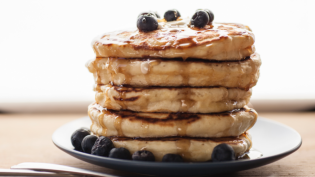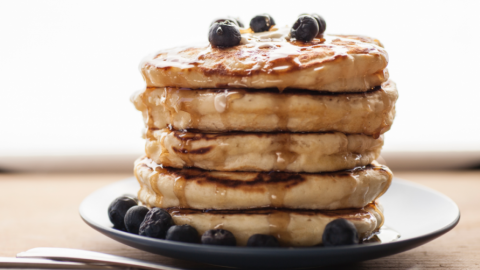Gluten Intolerance: Disease du Jour or Bona Fide Health Issue?
Have you jumped on the bandwagon yet? The gluten-free bandwagon, I mean. You might have heard that living gluten free could help you shed some pounds. Or maybe you heard that gluten is the root cause of almost all mood disorders and skin problems and memory issues.
How much is hype and how much is real? Is it just another diet fad or a real medical malady?
The simple answers are yes and yes.
Sensitivity to gluten, a protein found in many cereal grains, is fast becoming the most talked-about gastrointestinal issue of our time. It’s now OK to talk about bloating, diarrhea and gas in polite company if you’re talking about gluten intolerance.
Gluten intolerance is the umbrella term for any adverse reaction to gluten, a storage protein found in wheat, rye, barley, triticale, kamut and spelt. Gluten gives baked goods texture and structure. Without gluten, cookies, cakes and bread just don’t “taste” the same. You’ve probably heard TV chefs talk about “developing gluten.” Sometimes you want to develop it (for bread, for instance) and other times you don’t (for cakes). Gluten is always in the wheat flour typically used for baking; some kinds of wheat flour have more (like bread flour) and some have less (like cake flour) but they all contain gluten.
It’s a bit of a challenge to untangle all the misinformation about how gluten affects people. First, it’s important to note that there can be any of three distinct processes involved: an allergy to just wheat, or an inability to properly digest wheat gluten, or an inherited trait that makes it impossible for a person to eat any gluten-containing food not just wheat. Although all three conditions share many of the same symptoms, they are not the same in severity or potential for lasting damage to the body.
A food allergy is an abnormal immune response to foods that most of us can eat without problem. The Centers for Disease Control estimates that approximately 4 percent to 8 percent of children and 2 percent of adults suffer from food-related allergies. Although people can be allergic to just about any food, eggs, milk, peanuts, tree nuts, fish, shellfish, soy and wheat account for most of the problems.
People with wheat allergy are reactive to wheat but not necessarily to all grains or ingredients containing gluten.
Wheat allergy can cause gastrointestinal discomfort, hives and even difficulty breathing. Eating wheat may make susceptible individuals feel sick but this allergy will not usually cause lasting harm and is often outgrown.
Gluten sensitivity, also known as non celiac disease gluten sensitivity, is not an immune response. It occurs in the digestive tract and causes mainly gastrointestinal symptoms. Gluten sensitivity can probably best be described as a digestive issue.
Celiac disease is an inherited autoimmune disease affecting millions of people in the United States. People who have celiac disease cannot eat any gluten containing food. National Institutes of Health estimates there could be as many as 1 in 100 or 1 in 200 people with the condition. Shelly Case, a prominent Canadian dietitian who specializes in treating celiac disease, believes that upwards of 97 percent of cases of celiac go undiagnosed so it’s difficult to determine just how many people are afflicted with the condition.
Because the common presenting symptoms for wheat allergy, gluten sensitivity and celiac disease—diarrhea, gas, bloating—are so similar to symptoms of other gastrointestinal disorders, celiac is often misdiagnosed as irritable bowel syndrome. Diagnosis for celiac disease cannot be made from symptoms alone. The symptoms are just a red flag that alerts a physician to pursue diagnostic testing, which includes blood analysis and intestinal biopsy. A definitive diagnosis for celiac disease cannot be made without a biopsy that shows damage to the intestinal wall.
Even with a negative test result, some people improve on a gluten-free diet. They may have a sensitivity to gluten but they probably do not have celiac disease if the biopsy is negative.
Celiac is a serious disease that cannot be remedied by just avoiding wheat or buying a few gluten-free foods in the supermarket. The treatment for celiac disease is lifelong avoidance of all gluten-containing foods—not just wheat and not just sometimes. People do not outgrow celiac disease. There is no other treatment. Even minute amounts of gluten damage the lining of the intestines of people with celiac. In most cases, people feel better soon after eliminating gluten from their diet because the small intestine heals quickly as soon as gluten is removed.
If you do have celiac, it’s important to let your relatives know. Other family members may have mild symptoms that they have been ignoring or blaming on dietary indiscretions like overeating. In fact, some people with celiac disease are asymptomatic but the disease can still cause damage.
What if you have been having digestive issues and you find that avoiding wheat makes you feel better? Common wheat-containing foods like cereals and breads are really combinations of ingredients; they’re not pure wheat. You could be reacting to another ingredient in the food. So giving up pasta or breakfast cereal may make you feel better but it may not be because you have a problem with wheat or gluten.
Ingredient or not, a big part of the American diet depends on the nutrients from wheat. Breads, pastas and cereals are an important component of our western diet. It’s not a good idea to give up wheat unless you’re certain it is the offending substance. And if you do find out that wheat is a problem for you, consult a dietitian to help you find alternatives that will supply the nutrients you are missing when you give up wheat. Many of the wheat-free and gluten-free baked goods in the stores do not supply the same nutrients as their wheat-containing counterparts.
Being gluten intolerant means no conventional cupcakes, cookies, cakes or bread, pasta or pizza. Successful baking without gluten is an achievement rarely accomplished. Until recently, most gluten-free foods were not very palatable.
Nowadays, gluten free often tastes good enough for the whole family to eat thanks to innovative bakers like LynnRae Ries, founder of Gluten-Free Creations, a Phoenix bakery. Ries, who was diagnosed with celiac disease about 10 years ago, did not consider herself a good cook and certainly not a baker. She told me she rarely used her kitchen before her diagnosis. For Ries, a life without cookies and bread just didn’t seem right, so she was determined to figure out how to make her own. She took cooking classes to learn about baking even though she couldn’t taste the foods she baked because they contained gluten. After lots of experimentation and study, Ries has come up with wheat-free, gluten-free, nut-free and dairy-free recipes for breads, cakes, cookies, donuts, pizza dough and more. She sells her creations out of her bakery and supplies many local restaurants as well.
Larry Schneider, chairman of Arizona-based Gluten Free & Fabulous, LLC, and a retired businessman, jumped into the gluten-free arena after his diagnosis with celiac by starting a company devoted to developing gluten-free foods. Gluten Free & Fabulous sells several flavors of cookies as well as macaroni and cheese and gluten-free pasta with sauce to supermarkets around the country. Many of the products, including prepared pizza, can be purchased online.
If you’ve ever been on a diet of any kind, you know that eating out can be a chore. For someone who is gluten intolerant, finding something to eat that is completely gluten free means asking a lot of questions. It’s not just about the obvious ingredients like croutons but about what might be hidden in a commercially prepared product like canned broth used in a recipe. Ries suggests calling the restaurant ahead of time and talking directly to the chef. Best of all, though, are all the restaurants in town that offer gluten-free options: Carrabba’s Italian Grill, Chili’s, Claim Jumper, First Watch, Maggiano’s, Outback Steakhouse, PF Chang’s, PeiWei Asian Diner, Romano’s Macaroni Grill.
For those times when you’re too tired to cook and not in the mood to eat out, Organic Bistro Frozen Entrees can come to your rescue. Developed by a local naturopathic physician, Dr. Laryn Callaway, along with local chef/dietitian Stephanie Green, the frozen entrees offer healthy options for those on a gluten-free diet or for anyone looking for organic frozen meals. Organic Bistro meals are sold at local supermarkets in the freezer section.
So is it just a fad? Gluten intolerance and especially celiac disease is an under-diagnosed condition that deserves all the attention it’s getting. Just don’t be seduced by celebrities who write best sellers or supermarket shelves laden with gluten-free foods. If you have gastrointestinal issues, don’t try to solve them yourself. Self-diagnosis doesn’t work when it comes to complex issues like allergies, intolerances and chronic diseases. Just because you “feel better” when you don’t eat bread and pasta doesn’t mean that wheat or gluten is the problem. Get a medical diagnosis before you make any major changes to your diet.
THE INFORMATION PROVIDED IN THIS ARTICLE IS NOT MEANT TO REPLACE THE MEDICAL COUNSEL OF YOUR DOCTOR OR INDIVIDUAL CONSULTATION WITH A REGISTERED DIETITIAN. CONSULT YOUR DOCTOR OR REGISTERED DIETITIAN BEFORE MAKING ANY DIET, FITNESS OR TREATMENT CHANGES.
Examples of Gluten-Containing Foods and Ingredients
Barley
Beer
Brewer’s Yeast
Bulgur
Communion wafers
Couscous
Croutons
Farina
Graham flour
Hot dogs
Hydrolyzed wheat protein
Imitation bacon bits
Kamut
Luncheon deli meats
Malt
Malt vinegar
Malted milk
Matzoh
Modified wheat starch
Pasta
Rye bread
Sausages
Seitan
Semolina
Some candies
Some canned broths
Some commercial marinades
Some herbal teas
Some medications
Soy sauce
Spelt
Surimi
Triticale
Wheat bran
Wheat flour
Wheat germ
Wheat starch








